Emergence of Mands and Tacts of Novel Objects among Preschool Children
- PMID: 22477314
- PMCID: PMC2774104
- DOI: 10.1007/BF03393010
Emergence of Mands and Tacts of Novel Objects among Preschool Children
Abstract
According to Skinner's (1957) analysis of verbal behavior, the mand and the tact are functionally independent verbal operants, each of which is acquired through a unique history of reinforcement. The present study attempted to replicate the findings of Lamarre and Holland (1985), who empirically demonstrated functional independence of mands and tacts in typically developing preschool children. Five children participated. All were initially trained to complete two 4-piece assembly tasks. Four children were then trained to tact the four pieces that comprised one of the assembly tasks, and to mand for the four pieces that comprised the other task, using arbitrary vocal response forms. The remaining child received tact training only, and only on one task. The effects of training on the untrained operant were evaluated in a multiple-probe design across tasks. Following mand training, 4 out of 4 children reliably emitted tacts under testing conditions, while the effects of tact training differed across participants. The results differ from those of Lamarre and Holland, but are not necessarily surprising from the point of view of either Skinner's analysis or more recent behavioral accounts of language. Future research should attempt to identify variables that affect transfer between mand and tact relations.
Figures
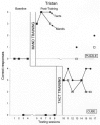
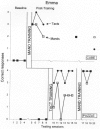
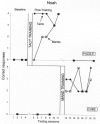
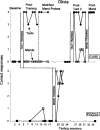
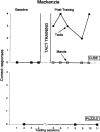

Similar articles
-
The emergence of untrained mands and tacts in children with autism.J Appl Behav Anal. 2012 Summer;45(2):265-80. doi: 10.1901/jaba.2012.45-265. J Appl Behav Anal. 2012. PMID: 22844136 Free PMC article.
-
The Functional Independence of Mands and Tacts: Has It Been Demonstrated Empirically?Anal Verbal Behav. 2014 Dec 17;31(1):10-38. doi: 10.1007/s40616-014-0026-7. eCollection 2015 Jun. Anal Verbal Behav. 2014. PMID: 27606198 Free PMC article.
-
Evaluation of single and mixed verbal operant arrangements for teaching mands and tacts.Anal Verbal Behav. 2010;26(1):15-30. doi: 10.1007/BF03393079. Anal Verbal Behav. 2010. PMID: 22477459 Free PMC article.
-
The benefits of Skinner's analysis of verbal behavior for children with autism.Behav Modif. 2001 Oct;25(5):698-724. doi: 10.1177/0145445501255003. Behav Modif. 2001. PMID: 11573336 Review.
-
Tact instruction for children with autism spectrum disorder: A review.Autism Dev Lang Impair. 2021 Feb 24;6:2396941521999010. doi: 10.1177/2396941521999010. eCollection 2021 Jan-Dec. Autism Dev Lang Impair. 2021. PMID: 36381533 Free PMC article. Review.
Cited by
-
The effects of listener training on the emergence of tact and mand signs by individuals with intellectual disabilities.Anal Verbal Behav. 2010;26(1):65-72. doi: 10.1007/BF03393084. Anal Verbal Behav. 2010. PMID: 22477464 Free PMC article.
-
Jack Michael's Motivation.Anal Verbal Behav. 2013;29(1):3-11. doi: 10.1007/BF03393119. Anal Verbal Behav. 2013. PMID: 23814362 Free PMC article.
-
Analyzing the Functional Interdependence of Verbal Behavior with Multiaxial Radar Charts.Perspect Behav Sci. 2024 Apr 30;47(2):471-498. doi: 10.1007/s40614-024-00404-6. eCollection 2024 Jun. Perspect Behav Sci. 2024. PMID: 39099737 Free PMC article.
-
A Tutorial on Indicating Responses and Their Importance in Mand Training.Behav Anal Pract. 2024 Sep 19;17(4):1238-1249. doi: 10.1007/s40617-024-00965-7. eCollection 2024 Dec. Behav Anal Pract. 2024. PMID: 39790932
-
Further evaluation of emerging speech in children with developmental disabilities: training verbal behavior.J Appl Behav Anal. 2007 Fall;40(3):431-45. doi: 10.1901/jaba.2007.40-431. J Appl Behav Anal. 2007. PMID: 17970258 Free PMC article.
References
-
- Egan C, Barnes-Holmes D. Assessing the independence of function between mands and tacts. In: Egan C, editor. Contextual effects on verbal communication. Symposium conducted at the 30th annual convention of the Association for Behavior Analysis; Boston, MA: May 2004. (Chair)
-
- Goyos C. Equivalence class formation via common reinforcers among preschool children. Psychological Record. 2000;50:629–654.
LinkOut - more resources
Full Text Sources

